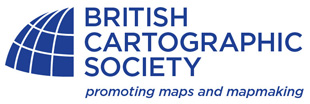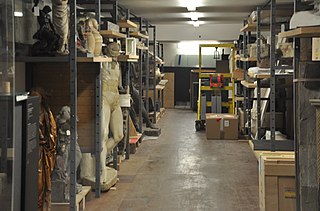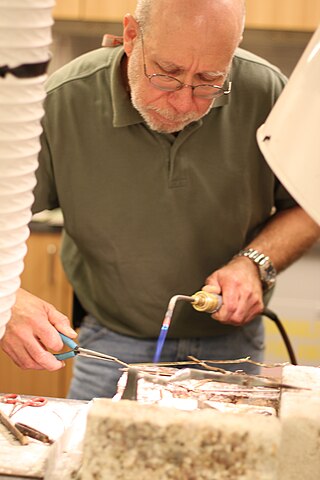
A museum is an institution dedicated to displaying and preserving culturally significant objects. Many museums have exhibitions of these objects on public display, and some have private collections that are used by researchers and specialists. Compared to a library, a museum hosts a much wider ranges of objects and usually focus around a specific theme such as the arts, science, natural history, local history, and other topics. Public museums that host exhibitions and interactive demonstrations are often considered to be tourist attractions, and many museums attract large numbers of visitors from outside their host country, with the most visited museums in the world regularly attracting millions of visitors annually.

The British Computer Society (BCS), branded BCS, The Chartered Institute for IT, since 2009, is a professional body and a learned society that represents those working in information technology (IT), computing, software engineering and computer science, both in the United Kingdom and internationally. Founded in 1957, BCS has played an important role in educating and nurturing IT professionals, computer scientists, software engineers, computer engineers, upholding the profession, accrediting chartered IT professional status, and creating a global community active in promoting and furthering the field and practice of computing.
The International Federation of Library Associations and Institutions (IFLA) is an international body representing the interests of people who rely on libraries and information professionals. A non-governmental, not-for-profit organization, IFLA was founded in Scotland in 1927 with headquarters at the National Library of the Netherlands in The Hague. IFLA sponsors the annual IFLA World Library and Information Congress, promoting access to information, ideas, and works of imagination for social, educational, cultural, democratic, and economic empowerment. IFLA also produces several publications, including IFLA Journal.
The Institute of Conservation(Icon) is the professional charitable body, representing and supporting the practice and profession of conservation. It has around 2500 members worldwide, including professional conservators, scientists and teachers involved with the care of heritage objects and buildings.
The United Nations General Assembly declared 2008 as the International Year of Planet Earth to increase awareness of the importance of Earth sciences for the advancement of sustainable development. UNESCO was designated as the lead agency. The Year's activities spanned the three years 2006–2009.

The Indian National Trust for Art and Cultural Heritage (INTACH) is a non-profit charitable organisation registered under the Societies Registration Act, 1860.

A conservator-restorer is a professional responsible for the preservation of artistic and cultural artifacts, also known as cultural heritage. Conservators possess the expertise to preserve cultural heritage in a way that retains the integrity of the object, building or site, including its historical significance, context and aesthetic or visual aspects. This kind of preservation is done by analyzing and assessing the condition of cultural property, understanding processes and evidence of deterioration, planning collections care or site management strategies that prevent damage, carrying out conservation treatments, and conducting research. A conservator's job is to ensure that the objects in a museum's collection are kept in the best possible condition, as well as to serve the museum's mission to bring art before the public.
Digital curation is the selection, preservation, maintenance, collection, and archiving of digital assets. Digital curation establishes, maintains, and adds value to repositories of digital data for present and future use. This is often accomplished by archivists, librarians, scientists, historians, and scholars. Enterprises are starting to use digital curation to improve the quality of information and data within their operational and strategic processes. Successful digital curation will mitigate digital obsolescence, keeping the information accessible to users indefinitely. Digital curation includes digital asset management, data curation, digital preservation, and electronic records management.

The British Cartographic Society (BCS) is an association of individuals and organisations dedicated to exploring and developing the world of maps. It is a registered charity. Membership includes national mapping agencies, publishers, designers, academics, researchers, map curators, individual cartographers, GIS specialists and ordinary members of the public with an interest in maps.
The Collections Trust is an independent UK-based charity that works with museums, libraries, galleries and archives worldwide to improve the management and use of collections. It was established in February 1977 as the Museum Documentation Association (MDA) and re-launched as the Collections Trust in 2008. Its head office is in Shoreditch, London.

The GSM Association is a non-profit industry organisation that represents the interests of mobile network operators worldwide. More than 750 mobile operators are full GSMA members and a further 400 companies in the broader mobile ecosystem are associate members. The GSMA represents its members via industry programmes, working groups and industry advocacy initiatives.
Gretchen Sibley was a longtime science educator, creator of the docent program at the Los Angeles County Museum of Natural History, and first executive director of the California State Science Fair.

A collection manager ensures the proper care and preservation of objects within cultural institutions such as museums, libraries, and archives. Collection managers, along with registrars, curators, and conservators, play an important role in collections care. Collection Managers and Registrars are two distinct collection roles that are often combined into one within small to mid-size cultural institutions. Collection Managers can be found in large museums and those with a history and natural history focus whose diverse collections require experienced assessment to properly sort, catalog, and store artifacts. A collection manager may oversee the registrar, archivist, curator, photographer, or other collection professionals, and may assume the responsibilities of these roles in their absence within an organization.

A mount maker is responsible for the creation of structures called object mounts used to provide unobtrusive physical support, stability, and security of objects while on display, in storage, or being transported to museums, art galleries, libraries, archives, botanical gardens or other cultural institutions. Protection and long-term conservation of the object is a key goal of mount makers. This is accomplished through careful design, selection of materials and manufacturing process that will not inadvertently harm the object, and a cautious installation process of the object into its place in an exhibit. Professionals in this field can be employed directly by an institution, be independent contractors, or work as part of larger cultural institution exhibit design firms.
The Geological Curators' Group (GCG) is a United Kingdom-based registered charity and a membership organisation. GCG's aims are, "to advance the education of the public in geology in particular by improving the standard of geological curation and by improving displays and information in public museums and other institutions." It is recognised by the Arts Council as one of 37 organisations in the Subject Specialist Network Programme that support, "the development of knowledge and expertise associated with specialist collections and their contribution to public engagement, education and enjoyment". The GCG is affiliated to the Geological Society of London as a specialist group, and it shares a Memorandum of Understanding with the Natural Sciences Collections Association (NatSCA) and the Society for the Preservation of Natural History Collections.
Marsh Charitable Trust, also known as Marsh Christian Trust, is a national charity in the United Kingdom, based in London. It is a registered charity under English law, and was established in 1981 by Brian Marsh, the current Chairman. Marsh was appointed an OBE for services to business and charity in the 2005 New Year Honours.
Conservation and restoration at the Smithsonian Institution deals with the care of the 138 million artifacts located in the collections of Smithsonian Institution. Work is conducted by one research center, the Museum Conservation Institute (MCI), and by conservators at the Smithsonian's museums, galleries, zoo. Smithsonian conservators provide myriad services to their units, including exhibit preparation of the museum collection and loan objects, advising on object care, training for future generations of conservationists, engaging in routine preventive care on a daily basis, conducting research projects related to the collections, and examining objects for evidence of manufacturing techniques and previous restorations All conservation labs collectively further the mission of the Smithsonian Institution, "the increase and diffusion of knowledge." Founded in 1846 the Smithsonian is the world's largest museum and research complex, consisting of 19 museums and galleries, the National Zoological Park, and nine research facilities.
The conservation and restoration of herbaria includes the preventive care, repair, and restoration of herbarium specimens. Collections of dried plant specimens are collected from their native habitats, identified by experts, pressed, and mounted onto archival paper. Care is taken to make sure major morphological characteristics are visible. Herbaria documentation provides a record of botanical diversity.

Miranda Constance Lowe is a British museum curator. She is principal curator of crustacea at the Natural History Museum, London and a founder member of Museum Detox.

James Arnold Dickinson, MBE, is a British conservation-restoration taxidermist who repaired mounted animal skins and skeletons for museums in the United Kingdom for 40 years. Among his restoration works are the Leeds Irish elk, the Leeds polar bear, the Armley Hippo, and the Warrington seal.









